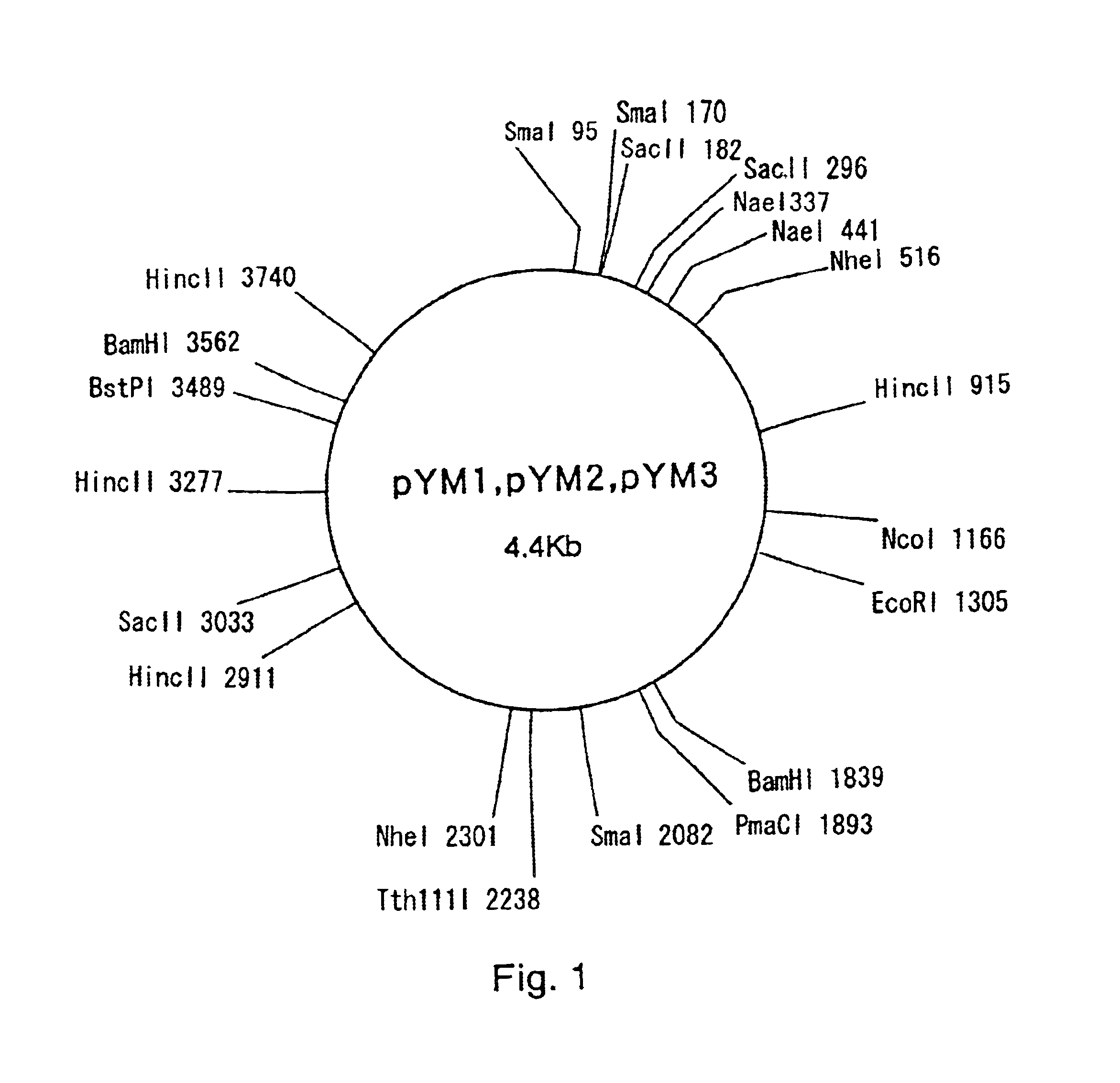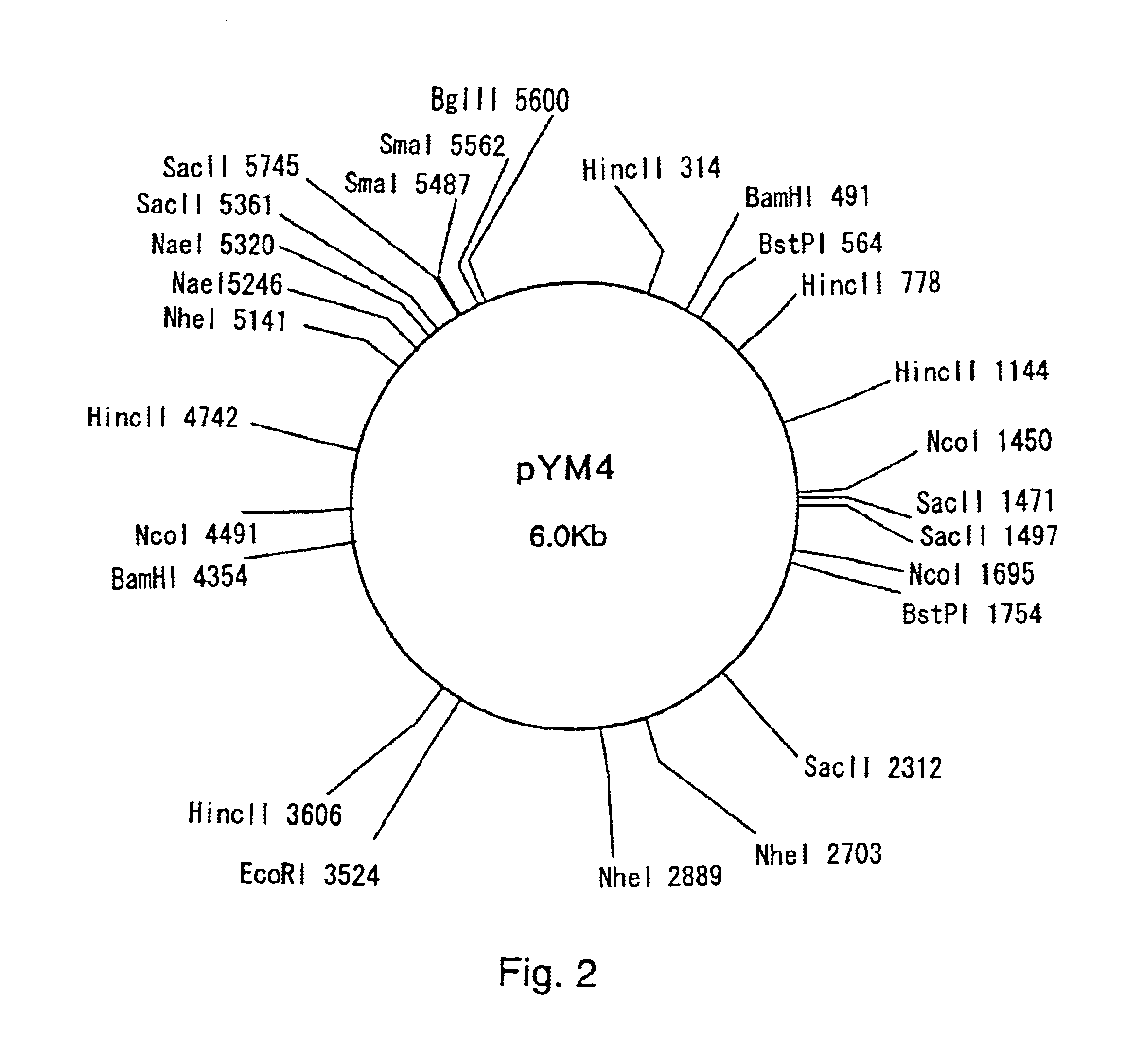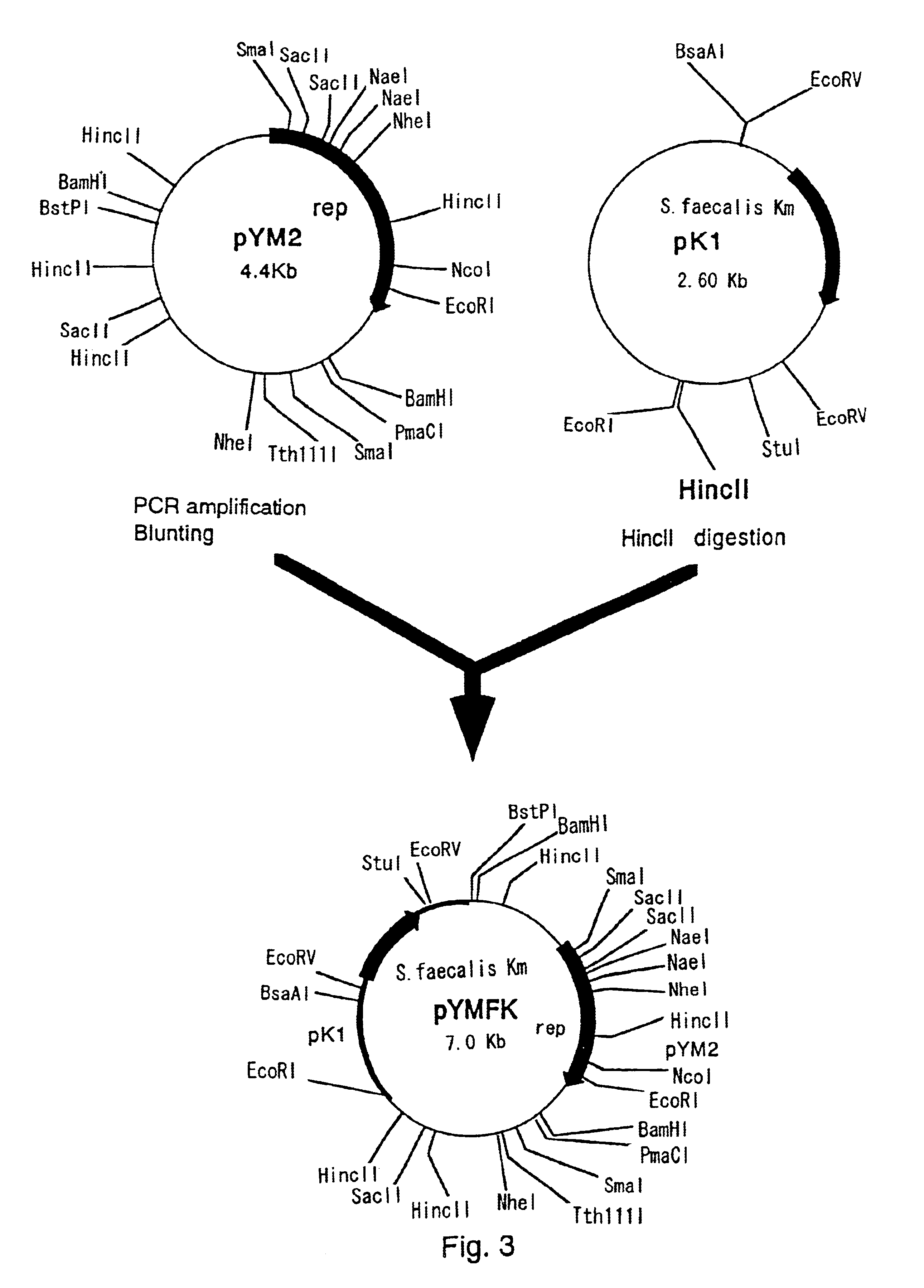Plasmid autonomously replicable in coryneform bacteria
a coryneform bacteria and plasmid technology, applied in the field of new coryneform bacteria, can solve the problem that no coryneform bacteria plasmid has been obtained at present, and achieve the effect of improving a coryneform bacteria
- Summary
- Abstract
- Description
- Claims
- Application Information
AI Technical Summary
Benefits of technology
Problems solved by technology
Method used
Image
Examples
example 1
Isolation and Characterization of Plasmids from Corynebacterium thermoaminogenes (FERM BP-1539, FERM BP-1540, FERM BP-1541, FERM BP-1542)
[0051]Corynebacterium thermoaminogenes AJ12340 (FERM BP-1539), AJ12308 (FERM BP-1540), AJ12309 (FERM BP-1541) and AJ12310 (FERM BP-1542) were cultured for 12 hours in CM2B liquid medium (Bacto-trypton (Difco): 1%, Bacto-yeast-extract (Difco): 1%, NaCl: 0.5%, biotin: 10 μg / L), and plasmid DNA fractions were obtained by the alkali method (Text for Bioengineering Experiments, Edited by the Society for Bioscience and Bioengineering, Japan, p.105, Baifukan, 1992). When these fractions were analyzed by agarose gel electrophoresis (Sambrook, J., Fritsch, E. F., and Maniatis, T., “Molecular Cloning: A Laboratory Manual, Second Edition”, Cold Spring Harbor Laboratory Press (1989)), DNA bands were detected for all of the fractions, and hence it was demonstrated that the aforementioned strains harbored plasmids. The plasmids prepared from FERM BP-1540, FERM B...
example 2
Construction of the Shuttle Vector pYMFK Containing the Km Resistance Gene Derived from Streptococcus faecalis
[0054]Regions necessary for efficient replication of pYM2 in coryneform bacteria include an AT-rich region upstream from rep and a region which affects copy number downstream from rep, besides the region coding for rep.
[0055]Therefore, in order to obtain a shuttle vector that can replicate in coryneform bacteria and E. coli without impairing the replication ability of pYM2, a region enabling autonomous replication in E. coli and a selection marker were inserted into sites in the vicinity of the BstPI site of pYM2.
[0056]First, a vector having a drug resistance gene of S. faecalis was constructed. The kanamycin resistance gene of S. faecalis was amplified by PCR from a known plasmid containing that gene. The nucleotide sequence of the kanamycin resistance gene of S. faecalis has already been elucidated (Trieu-Cuot, P. and Courvalin, P., Gene, 23 (3), pp.331-341 (1983)). Based...
example 3
Construction of pYMK Containing Km Resistance Gene Derived from Tn903
[0062]A region containing the replication origin was amplified in the same manner as in Example 2 by using pYM2 extracted from C. thermoaminogenes AJ12310 (FERM BP-1542) as a template and the following primers:
S1XbaI: 5′-GCT CTA GAG CAA CCA GGG GGA GGG CGC GAG GC-3′ (SEQ ID NO: 12)
S3XbaI: 5′-GCT CTA GAG CTC TCG TAG GCT GCA TCG GAG GCG GGG-3′ (SEQ ID NO: 13)
[0063]The obtained amplified fragment was purified by using MicroSpin TM S-400 HR columns produced by Amersham Pharmacia Biotech Co., digested with a restriction enzyme XbaI produced by Takara Shuzo Co., Ltd., and then ligated to a fragment obtained by fully. digesting pHSG299 (Takara Shuzo Co., Ltd.) with XbaI by using DNA Ligation. Kit. ver. 2 produced by Takara Shuzo Co., Ltd. Competent cells of Escherichia coli JM109 (produced by Takara Shuzo) were transformed with the ligated DNA to obtain transformant strains.
[0064]Plasmids were prepared from the transforma...
PUM
| Property | Measurement | Unit |
|---|---|---|
| Fraction | aaaaa | aaaaa |
| Fraction | aaaaa | aaaaa |
| Digital information | aaaaa | aaaaa |
Abstract
Description
Claims
Application Information
 Login to View More
Login to View More - R&D
- Intellectual Property
- Life Sciences
- Materials
- Tech Scout
- Unparalleled Data Quality
- Higher Quality Content
- 60% Fewer Hallucinations
Browse by: Latest US Patents, China's latest patents, Technical Efficacy Thesaurus, Application Domain, Technology Topic, Popular Technical Reports.
© 2025 PatSnap. All rights reserved.Legal|Privacy policy|Modern Slavery Act Transparency Statement|Sitemap|About US| Contact US: help@patsnap.com



